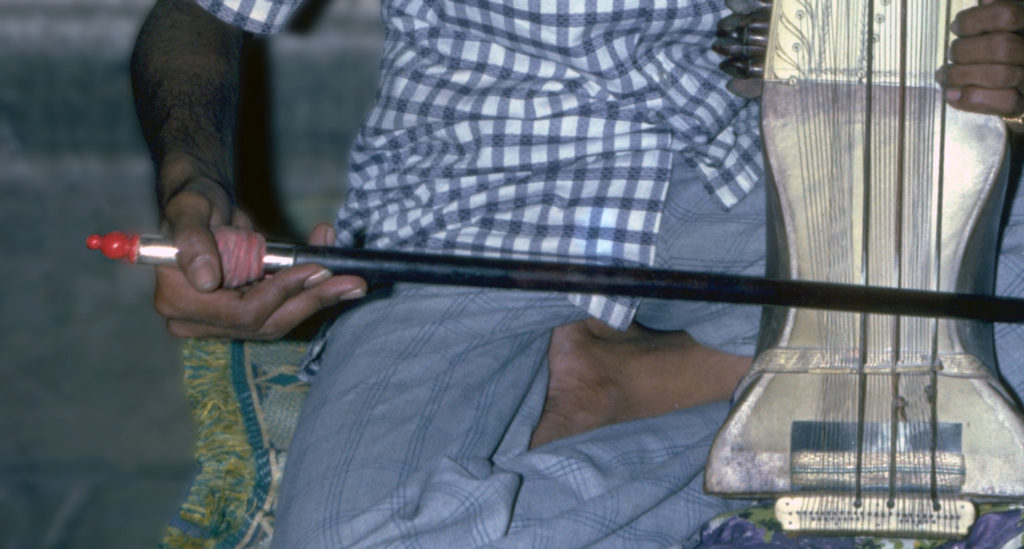
The lahara (literally “a wave”) is the repetitive melody used to accompany the tabla and pakhawaj solo. It is also used to accompany the Kathak performance.
The lahara is curious, because it represents a reversal of the usual roles of the musicians. Normally the tabla player plays a repetitive pattern which allows the main musician to improvise. However in the tabla solo, it is the tabla player that becomes the main artist and while the sitarist, harmonium player, sarangi player or some other instrumentalist, assumes a supportive role. The lahara is what these artist play in order to accompany the tabla player.
Although it would appear that playing the lahara is a trivial task; it is not. One must have a very well developed sense of rhythm, as well as an understanding of tabla or kathak. Furthermore, one must be sensitive as to when there are tempo changes. Failure to keep up with any of these things can cause the entire performance to come crumbling down.
There is occasionally confusion regarding terminology. Some parts of India refer to the lahara as “naghma”. Furthermore, the term Lahara is sometimes (incorrectly) used to refer to the entire tabla solo in its broad sense, and not just the accompaniment melody.
It is extremely important to emphasise the subjective and artistic component of the lahara. That is to say that if a lahara sounds good to you, that is all that it takes to make it effective. Therefore, the laharas that are mentioned in the next pages have a certain latitude. For instance, a Chautal Lahara may work just fine for Ektal; do not feel constrained to use the laharas ONLY in the tal to which they are ascribed. There are of course natural limits to the degree to which laharas may be used; obviously you would not wish to use a Jhaptal lahara for Rupak tal unless you make some very significant structural changes.
Laharas
- Three and Six Beat Laharas (e.g. Dadra Tal)
- Four and Eight Beat Laharas (e.g. Kaherava Tal)
- Seven Beat Laharas (e.g. Rupak Tal)
- 10-Beat Laharas (e.g. Jhaptal)
- 11-Beat Laharas (e.g. Chartal-ki-Savari)
- 12-Beat Laharas (e.g. Ektal)
- 13-Beat Laharas (e.g. Chandrachautal)
- 14-Beat Laharas (e.g. Dipchandi)
- 15 Beat Laharas (e.g. Pancham Savari)
- 16-Beat Laharas (e.g. Tintal)
- 17-Beat Laharas (e.g. Vishnu Tal)
- 18-Beat Laharas (e.g. Matta Tal)
- 19-beat Laharas (e.g. Purna Tal)
- 21-Beat laharas (e.g. Mansij Tal)